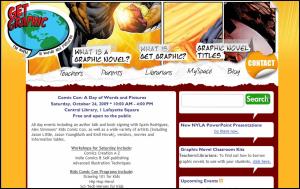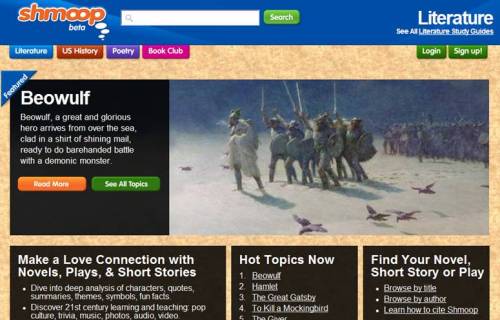 If you haven’t checked out 60 Second Recap, you’re in for a treat. 60 Second Recap is a collection of video clips covering the plots, characters, symbolism, and more of favorite classic literature for teens. But it’s not a dry, overly-academic examination. It’s a lively conversation hosted by a real-life, somewhat zany hostess named Jenny (you can find her on Twitter).
If you haven’t checked out 60 Second Recap, you’re in for a treat. 60 Second Recap is a collection of video clips covering the plots, characters, symbolism, and more of favorite classic literature for teens. But it’s not a dry, overly-academic examination. It’s a lively conversation hosted by a real-life, somewhat zany hostess named Jenny (you can find her on Twitter).
The site’s overview gives you a sense of the tongue-in-cheek humor that’s behind this great site:
“Eat your lima beans,” Mom used to say.
And now that you’re out on your own, honestly, are lima beans a staple of your culinary repertoire?
There, in a lima bean, lies the problem confronting the great works of literature. We’re all forced to read them in school so we can get good grades so we can go to a good college so we can get a good job so we can forget all about that literature they used to force us to read so we could get good grades.
The 60second Recap™ aims to break this cycle of canonical irrelevance. We want to help teens (yes, teens of all ages!) engage with literature. We want to help them see it not as some chore to be endured, but as — dare we say it? — the gift of a lifetime. How? Through the language of our time — the language of video. Video that’s focused, engaging, informative … and short enough to hold just about anyone’s attention.
Smirk if you must. Consider this yet another mile-marker on civilization’s road to perdition. But here’s the fact: You won’t get non-readers to read by forcing them to read more. You’ll get them to read by opening their eyes to the marvels awaiting them between the covers of that homework assignment.
With the 60second Recap™, teens finally have an alternative to the boring, text-based study guides that have burdened them for generations. And — who knows? — maybe that’s just what they’ll need to begin a love affair with literature, one that will last a lifetime.
In addition to the videos on classics such as Animal Farm, Of Mice and Men, Frankenstein, Lord of the Flies, and Hamlet, users will find a section called Recap Resource which includes a Dictionary of Terms (allegory, motifs, subtext, protagonist, etc.) and How to Write a Paper (that Won’t Put your Teacher to Sleep). Again, these are presented in video form, which them much less intimidating for the average high school user.
The site also features an area for video responses from users, and another for users to request titles for recapping.
I highly recommend you visit the site and give it a look! I’m curious to see how it will change as it grows.
Know another great site for teachers working with novels? Find me on Twitter!


 nners in Lit that I’ve actually read! Sorry, my fellow Reading and Language Arts teachers!
nners in Lit that I’ve actually read! Sorry, my fellow Reading and Language Arts teachers! Even high school students will appreciate how effectively the concise picture book format captures Nobel’s life story. As an extension activity, students could research a winner of the Peace Prize (all listed in the back of the book) and create a similar picture book-like recounting, using an easy online publishing program such as
Even high school students will appreciate how effectively the concise picture book format captures Nobel’s life story. As an extension activity, students could research a winner of the Peace Prize (all listed in the back of the book) and create a similar picture book-like recounting, using an easy online publishing program such as 


